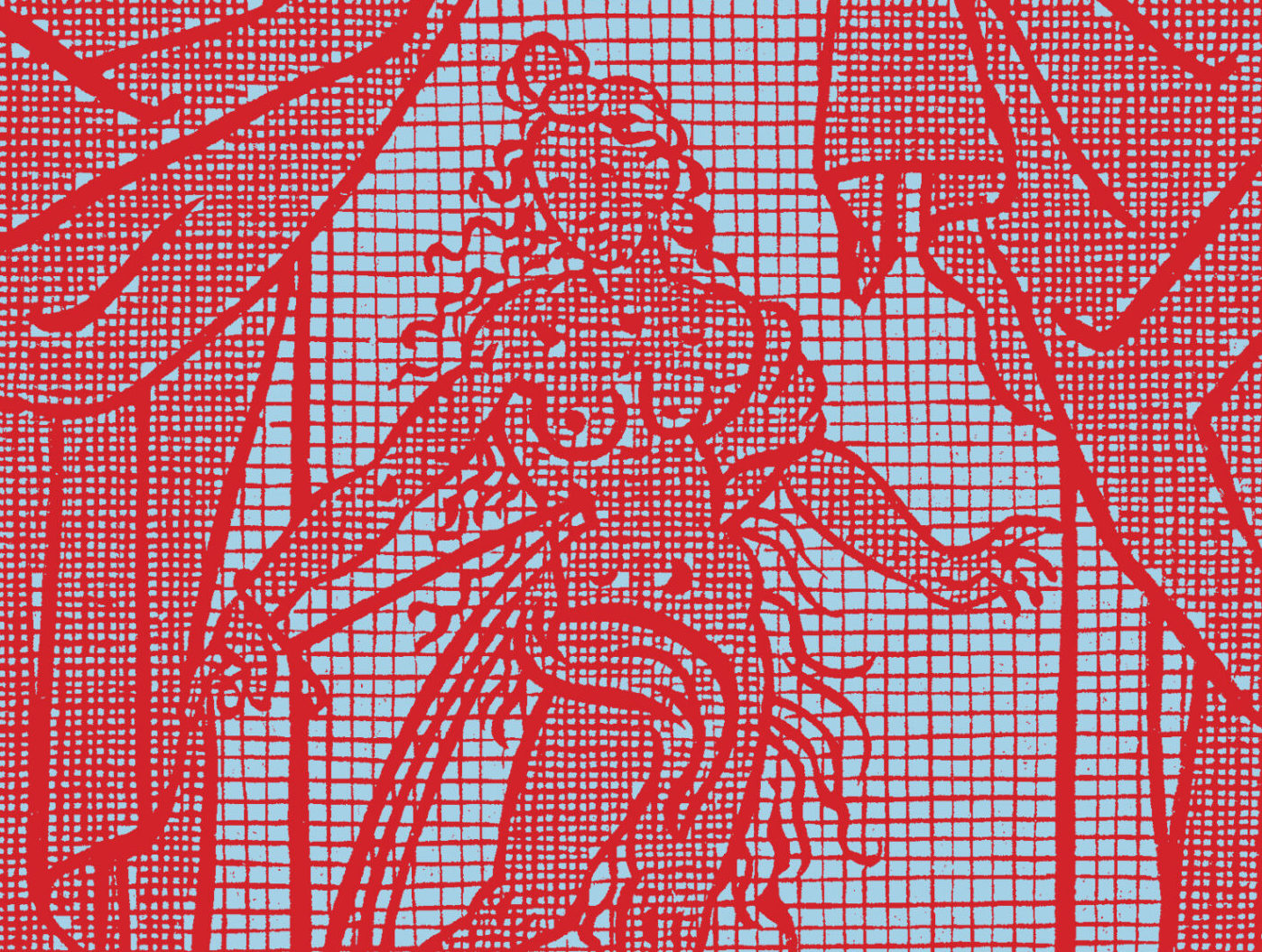essays
Trans Characters Are In Vogue, But Where Are the Thinkpieces?
Given the numerous cis-written novels featuring trans characters, it’s galling that mainstream reviews consistently misrepresent or outright ignore them

In 2015, Casey Plett wrote about the rise of a particular kind of novel in Canada: ‘Call them the Gender Novels – books about Gender with a capital G.’ She describes the rise of non-trans authors writing sympathetic books about trans characters, exemplified by books like Jeffrey Eugenides’ Middlesex (2002) and Shani Mootoo’s Moving Forward Sideways Like a Crab (2014), and how they almost inevitably produce identikit main characters: flat, stereotypical sketches of trans people with no inner lives, who exist mainly to make cis readers feel edified.
If the only alternative were a return to The 40-Year-Old Virgin or CSI—using the trans character as a punchline or serial killer—then perhaps the Gender Novel, for all its literary deficiencies, would still have political merit. But that is not the only alternative. There are people out there writing good trans characters; many of those writers happen to be trans.
Casey Plett
2015 is a while ago now, particularly in trans years; the full-on Gender Novel has since become a little gauche in polite company (though it doesn’t stop everyone). But cis authors are writing about transness more than ever. So often, now, I’ll pick up a bestselling, award-nominated, comfortably popular literary novel – the kind you find on three-for-two tables in bookstores – and discover that it has a trans main character, or transness is a notable part of its plot. Girl, Woman, Other. Everything Under. The Ministry of Utmost Happiness. Frankissstein. The Vanishing Half. A Burning. The Perfect World of Miwako Sumida. Hurricane Season. The Mars Room. 10 Minutes 38 Seconds In This Strange World. How Much of These Hills is Gold. Going earlier: Infinite Jest, A Prayer for Owen Meany, Kafka on the Shore.
We are people of interest! We are the topic du jour. So, to ask bluntly: where are the thinkpieces? Usually, a common trend in fiction by cis people merits comment: I’ve read a lot of articles about novels where straight millennial women have mildly humiliating sex. In fact, seeing another one makes me emit the kind of high, keening sound a chicken might produce seconds before laying an egg. But for years, I’ve been watching the same cycle. A cis author produces a work full of rich and strange ideas about transness (often bad ideas, but compelling nonetheless); I wait for cis reviewers to say anything interesting about its use of transness; I get nothing. Well, I get something: avoidance, discomfort, transphobia, and a firm implication that transness is not for genteel literary discussion, even as all these lauded authors keep writing about it.
Usually, a common trend in fiction by cis people merits comment: I’ve read a lot of articles about novels where straight millennial women have mildly humiliating sex.
Now, not everyone has the good taste to care about trans people as much as I do, and I know from personal experience that word counts are tight. I’m not demanding every trans cameo be documented in print. But there are multiple prominent reviews of Booker-winning novel Girl, Woman, Other that don’t mention the book’s nonbinary character, despite their existence being referenced in the book’s title, and despite their crucial dissenting role in a book about modern Black British womanhood. Or take Jeff VanderMeer’s review of Everything Under, a retelling of Oedipus with two trans main characters, where the tragic prophecy is fulfilled through the main character’s gender transition; the incredibly central importance of transness and transition is considered an afterthought – ‘The novel also explores gender roles and gender fluidity.’
The first two of those Girl, Woman, Other reviews incorrectly describe the twelve characters as all ‘women’ and ‘female’, which is also a mistake its author, Bernardine Evaristo, has made in interviews. Slips in terminology are common in reviews of books with trans themes, when they would easily be caught by a trans staff member, sensitivity reader, or robust style guide. It doesn’t take a degree in trans studies to learn not to call a trans woman of color a ‘sassy transvestite,’ or to avoid using terms like ‘female’ for trans men and nonbinary people. Nor does it take incredible reading skills to know that Conan, a character in The Mars Room, is a trans man, not a ‘trans woman’. (Some other reviewers call him a ‘female-to-male trans’, which was already an outdated term by the novel’s 2018 publication.)
These slips are irritating, infuriating, even upsetting at times, but they’re impactful mainly because of how they betray a deeper lack of care and empathy. There’s a fundamental incuriousness here about why transness is in this book, and what it is doing or failing to do.
There’s a fundamental incuriousness here about why transness is in this book, and what it is doing or failing to do.
If you read the newspaper reviews of Frankissstein (2019), Jeanette Winterson’s Booker-nominated reinterpretation of Frankenstein, you might get a similar initial sense that I did: a zany, imaginative, weird, comic novel that tackles cyborgs, feminism and AI. “Jeanette Winterson’s Playful New Novel Offers Thoughts on Mad Science and Sexbots,” reads the NYT’s headline; they describe the novel as ‘talky, smart, anarchic and quite sexy.’ The Independent calls it ‘light and comic’, full of ‘zany fun’, while various outlets focus on its hilariously loathsome sex doll seller and treatment of hot-button topics. When they mention Ry – the trans protagonist of one of the novel’s two narratives – it’s mostly casual, basic descriptions of their character: ‘The narrator is a trans man named Ry Shelley’ is the simple (and arguably inaccurate) summation in the Washington Post. Ry’s transness is of interest but is implied to be a simple fact rather than a driver of the novel’s events. There’s only a rare, slight glimpse of trouble, such as a throwaway comment in the LA Review of Books review about Victor, Ry’s sexual partner, ‘repeatedly assert[ing] that he is not gay.’
Forgive my shock when I actually read the book and found that Ry is subjected to an exhaustive array of minor and major harassments, culminating in a sickeningly graphic scene where they are clocked as trans in a men’s bathroom and viciously sexually assaulted. It felt like Ry was a martyr archetype who existed to experience pain, rather than a human person. Ry’s characterisation is flat and passive: they inexplicably answer invasive and threatening questions, they put up with fetishization and objectification from almost everyone they meet, and they talk like a cyborg. (They self-describe as ‘I am a hybrid’, which is admittedly pretty metal but is also more suggestive of a Toyota Corolla than any trans person I’ve ever met.) And it is irritating to see a novel treat trans bodies as freakish and newfangled.
But what obsessed me after reading Frankissstein was going back to those reviews, trying to fathom the gulf between their descriptions and the novel itself. For whom is this fun? For whom is this light? What do cis people see when they read this?
In Lian Konemann’s book The Appendix: Transmasculine Joy in a Transphobic Culture, Konemann describes keeping a list of transphobic things he encounters for a few months in 2019. Coincidentally, the first thing he mentions is a review of Frankissstein in the London Evening Standard:
You flit in this narrative between Shelley in the 19th century and our contemporary narrator, Dr Shelley, a transgender – of course! – medical doctor. S/he is called Ry, short for Mary (as in Mary Shelley), which makes you wonder why s/he isn’t called Ree, so as not to sound like Ryan. S/he started out female and has XY chromosomes but has had upper body surgery, no prosthetics and testosterone supplements which gives Ry an elongated clitoris – two centimetres, I think – and a satisfactory sex life.
‘Of course!’. For once, it’s clear enough what the reviewer sees when she looks at Ry: a mixture of obvious disdain (hence her ostentatious avoidance of their pronouns) and anatomical, objectifying interest. She sounds like a zoologist describing an abnormally developed frog. These are reviews of trans themes at their worst: they become a fun way for the reviewer to promote dehumanizing and hostile attitudes toward trans people. Regrettably, these are often the only reviewers who engage sustainedly with a book’s trans themes, but only out of voyeuristic delight at having an object to poke at. Specifically an ‘elongated clitoris,’ which plenty of cis women also have, by the way.
These are reviews of trans themes at their worst: they become a fun way for the reviewer to promote dehumanizing and hostile attitudes toward trans people.
It’s clear that most reviewers don’t want to talk like this. However, lack of interest in trans people, anxiety about pissing people off, and lack of knowledge of trans subject matter tends to produce unsatisfying reviews. Avoidance is disappointing, as is an uncritical, magnanimous ‘oh, how lovely’ attitude towards the mere existence of trans representation. Transness has the curious capacity to turn off cis reviewers’ critical capacities. Part of this could likely be solved by having a robust style guide (which the Trans Journalists Association has), but part of it comes, I believe, from a desire not to poke the bear. I live in the UK, where most of our papers are openly trans-exclusionary, and even in the US there are almost no trans journalists stably employed in journalism. If reviewers talked more explicitly and seriously about transness, it might be more difficult to pivot to trans scare propaganda for your Sunday feature, or to blithely ignore trans people when we’re inconvenient. And wouldn’t that be a shame.
In dangerous times, I would like to suggest a riskier approach to trans criticism, given that I have little to lose: what if we asked about why cis people are so interested in transness, and what function characters serve in cis novels? What if we admitted that, at least some of the time, trans characters are used as a way for cis authors to talk to other cis people, and asked about the messages they’re sending? What if we looked at the anxieties and prejudices folded into some portrayals of trans people, the genuine interest and desire for connection that come in others, and work backwards towards a trans criticism where cis people might, just might, be allowed to admit that they find us interesting and scary? What if we broke the awkward silence?








